Paint with No Rules
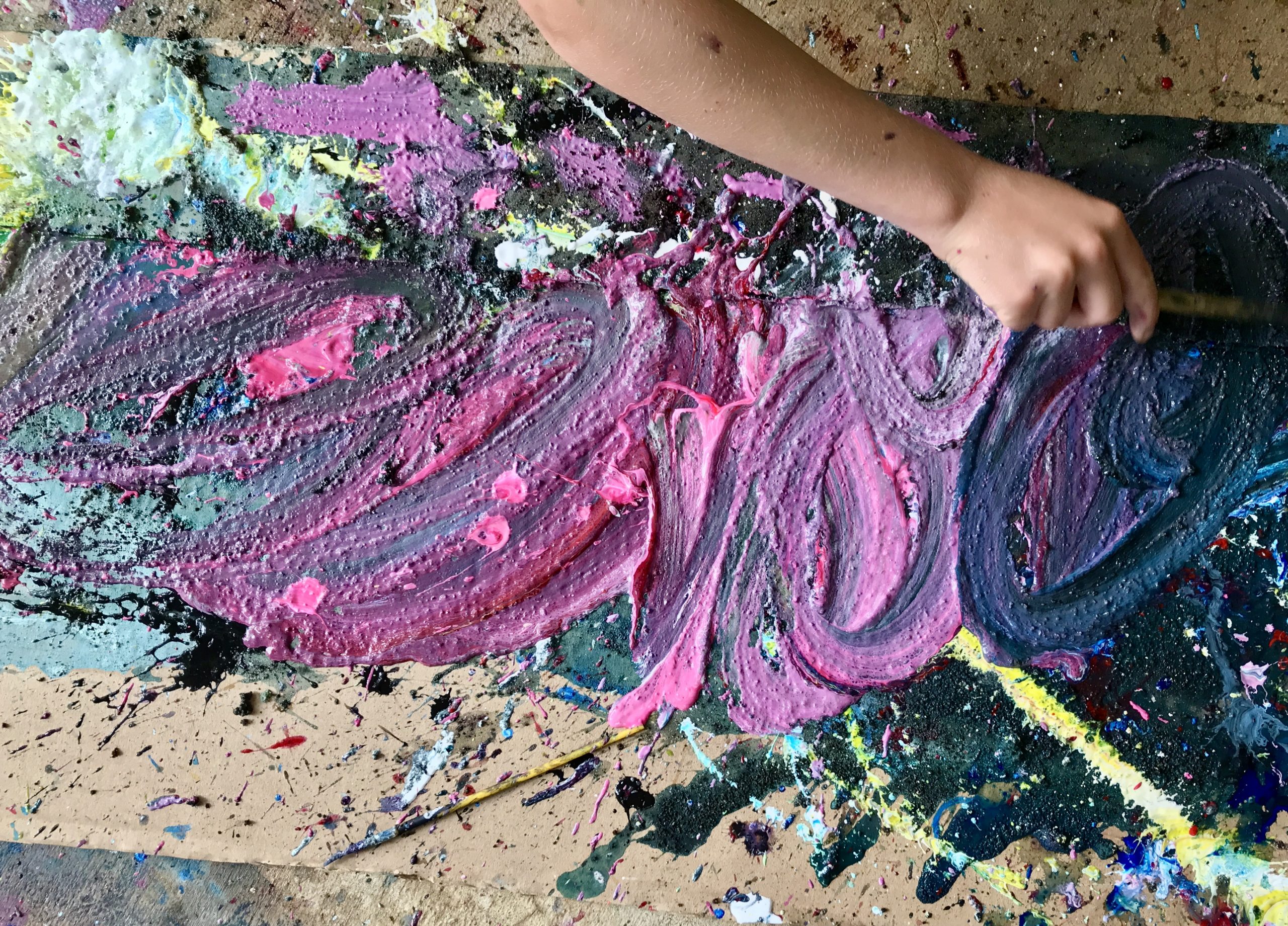
Experiment! Create your own large painting with a mixture of techniques inspired by artist Helen Frankenthaler.
We want to see your creations! Share on social media @hirshhorn with #HirshhornInsideOut.
Time: 45–60 minutes
Skill Level: Intermediate
Topic: Experimentation
LOOK CLOSELY

Helen Frankenthaler, Painted on 21st Street, 1950-1951. Oil, sand, plaster of paris, and coffee grounds on sized and primed canvas; 69 ⅛ × 97 in. Hirshhorn Museum and Sculpture Garden, Smithsonian Institution, Washington, DC. Museum Purchase, 1980
Let your eyes wander across the canvas. What do you see? Describe the surface, colors, and lines. If you could touch this painting, how might it feel?
You probably noticed the texture, which appears thick and gritty in some places and flat and smooth in others. This artwork is called Painted on 21st Street, and it was made by Helen Frankenthaler in 1950-1951. Frankenthaler mixed sand and coffee grounds into her paint and plaster and made sweeping gestures across the canvas.
Now look closely at the painting Basque Beach, also by Frankenthaler. Describe its colors and texture. How is it different from Painted on 21st Street?
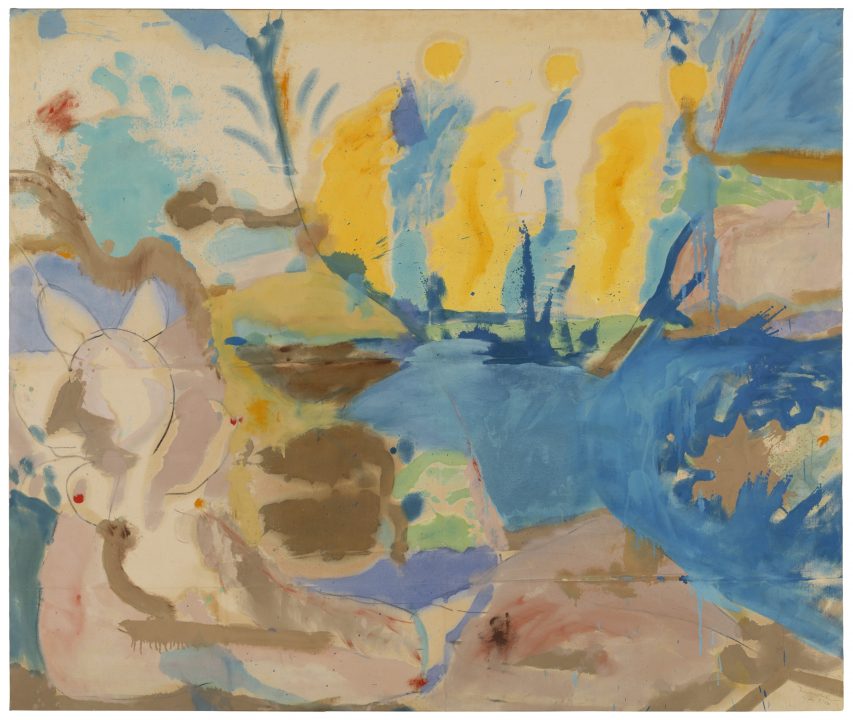
Helen Frankenthaler, Basque Beach, 1958. Oil and charcoal on canvas; 58 5/8 × 69 5/8 in. Hirshhorn Museum and Sculpture Garden, Smithsonian Institution, Washington, DC, Gift of Joseph H. Hirshhorn, 1966
This painting was made a few years later, in 1958. For this work, the artist thinned oil paints with turpentine, a fluid taken from the resin of trees. She poured this thinned paint onto the canvas, allowing it to saturate the canvas. In some areas, the paint is more opaque (you can’t see through it), and in others, it’s more translucent (it’s see-through). Some parts of the canvas are left unpainted.
Helen Frankenthaler (1928-2011) was an American artist known for experimenting with materials and techniques. She was born and raised in New York City. Her works often feature a mix of shapes that suggest nature, abstract forms, and lyrical gestures. The style of her art changed many times during her six-decade career. She initially painted in an Abstract Expressionist style, meaning she painted what she felt. She later developed a new stain technique that would lead to a style called Color Field Painting. In these paintings, Frankenthaler used thinned paint and poured it onto her canvas so that it would soak through the canvas rather than sitting on its surface. Frankenthaler struggled to not be defined by her gender in the art world. She disliked the term “woman painter” and referred to herself as “a painter—period.”
See more works by Helen Frankenthaler in the Hirshhorn collection.
MAKE IT!
“There are no rules. Go against the rules or ignore the rules. That is how breakthroughs happen.”—Helen Frankenthaler
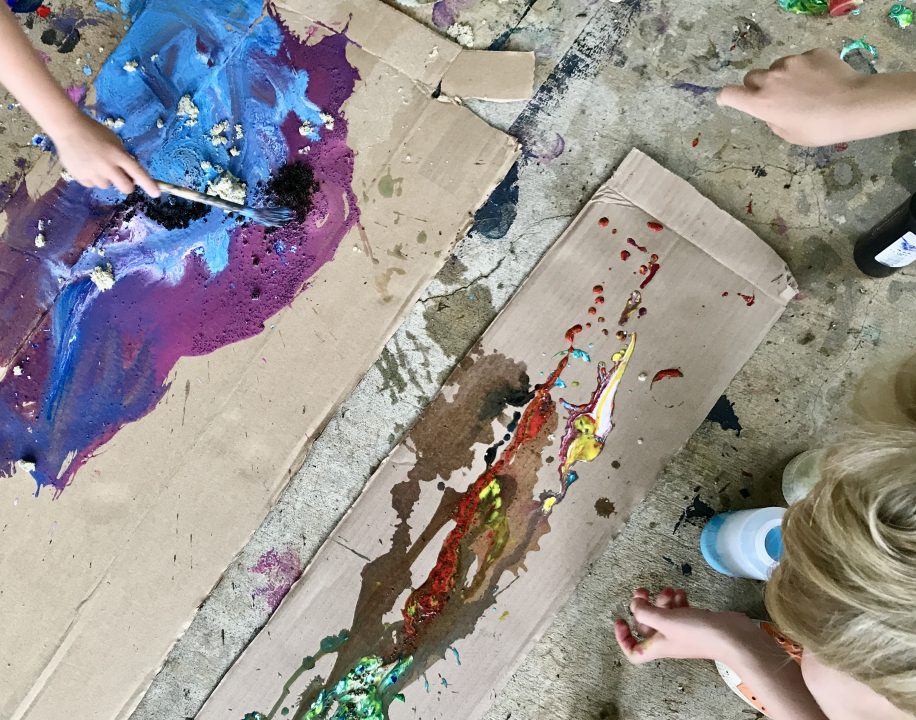
- Talk: What does it mean to experiment? You may have heard of science experiments, but did you know artists also experiment? In this project, you’ll experiment with pouring paint and mixing in different materials to add texture.
- Choose your work area. This is not a neat and tidy project. Work in a space you don’t mind getting messy, such as outside. If you need to work inside, you can place a piece of cardboard inside a large plastic bin or place a large sheet on the floor under your canvas. For our model project, we placed two large pieces of cardboard on an outdoor concrete floor that could be easily washed afterward.
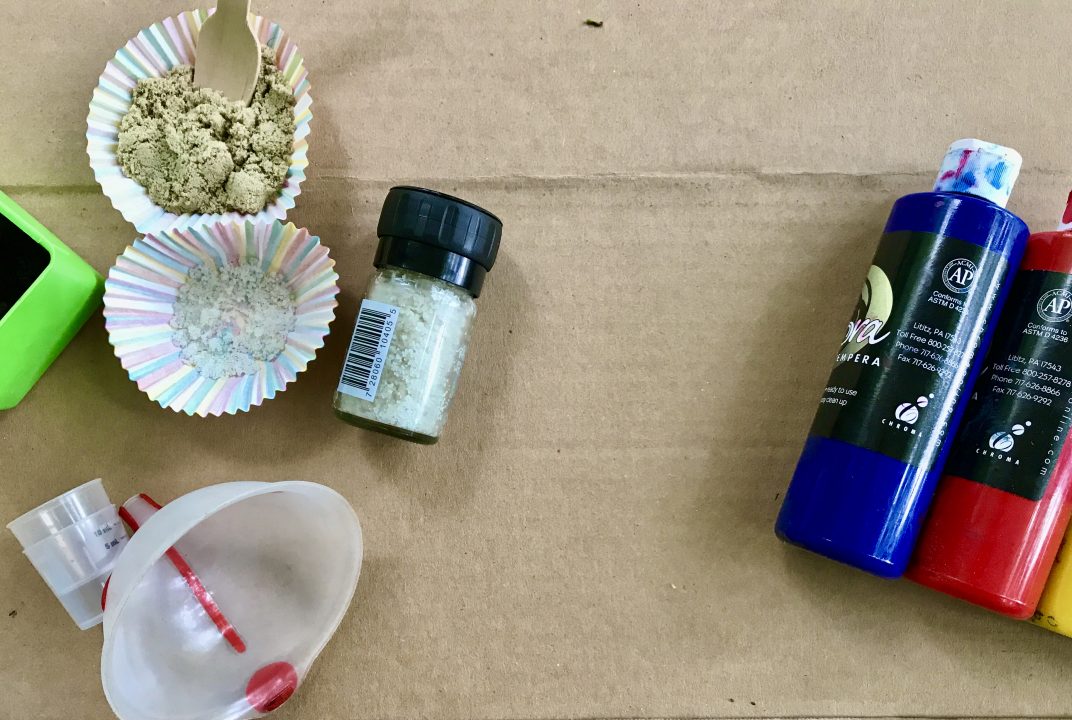
- Gather your materials. You’ll need:
- A large piece of cardboard
- Paint (water-based acrylic is recommended, but any kid-friendly paint will work)
- Gritty materials such as sand, salt, and coffee grounds
- Water
- Containers for pouring (try one or more of the following: droppers, small cups, funnels) and tools for mixing and adding texture (try one or more of the following: plastic spork, popsicle sticks, chopsticks, fingers).
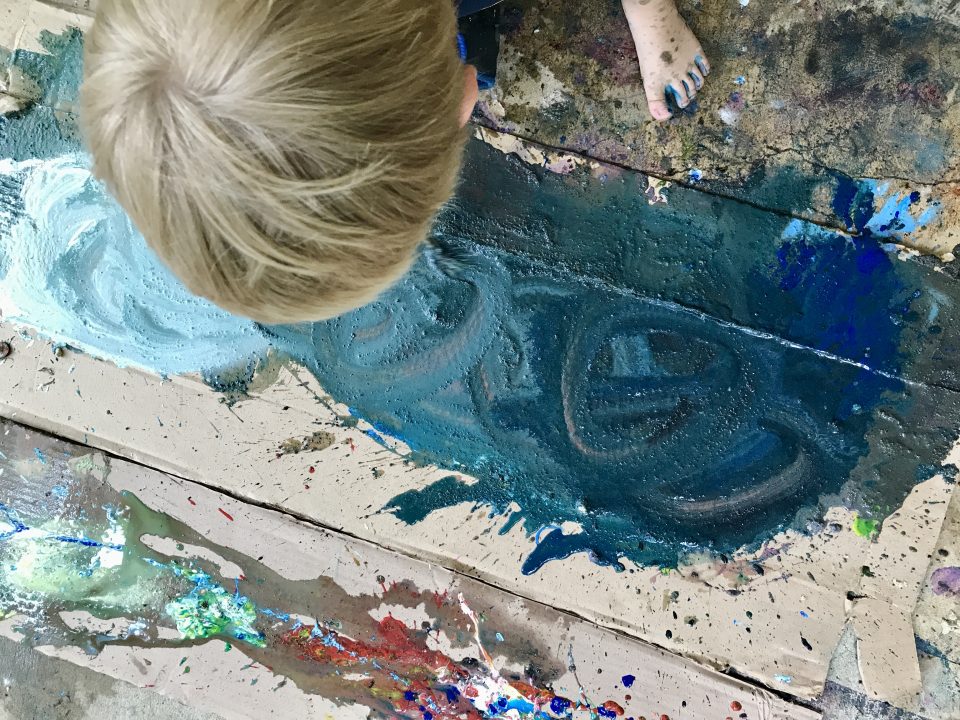
- Prepare to work on the floor. Helen Frankenthaler liked to place her large canvases on the floor and walk around them while working. This was a “freeing” experience from the tradition of using an easel. A note to caregivers: Young children will love the access painting on the ground gives them. Some children may want to walk in the paint. Be prepared for this possibility: if you aren’t comfortable with extra mess, be sure to set expectations to keep the paint on the canvas and bodies off the canvas (as much as possible!). If you don’t mind the extra mess, enjoy it (and plan for a bath afterward!).
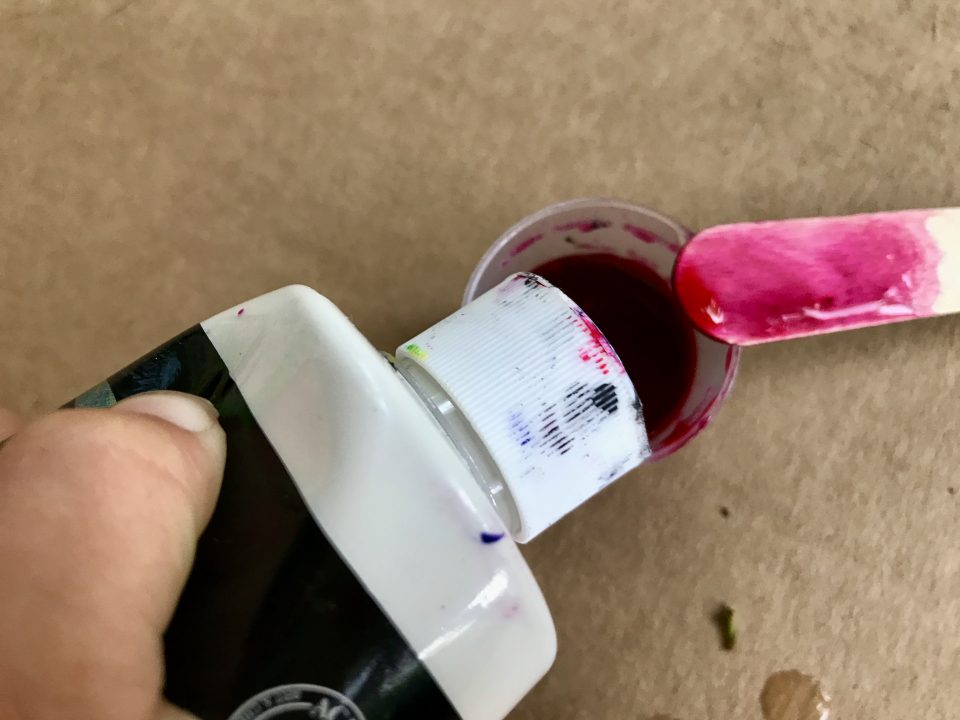
- Prepare your paint and thin it with water. Use a small cup to mix your paint. Add water. Note: See our recommendation to only paint with primary colors in this Mini Art Lesson.
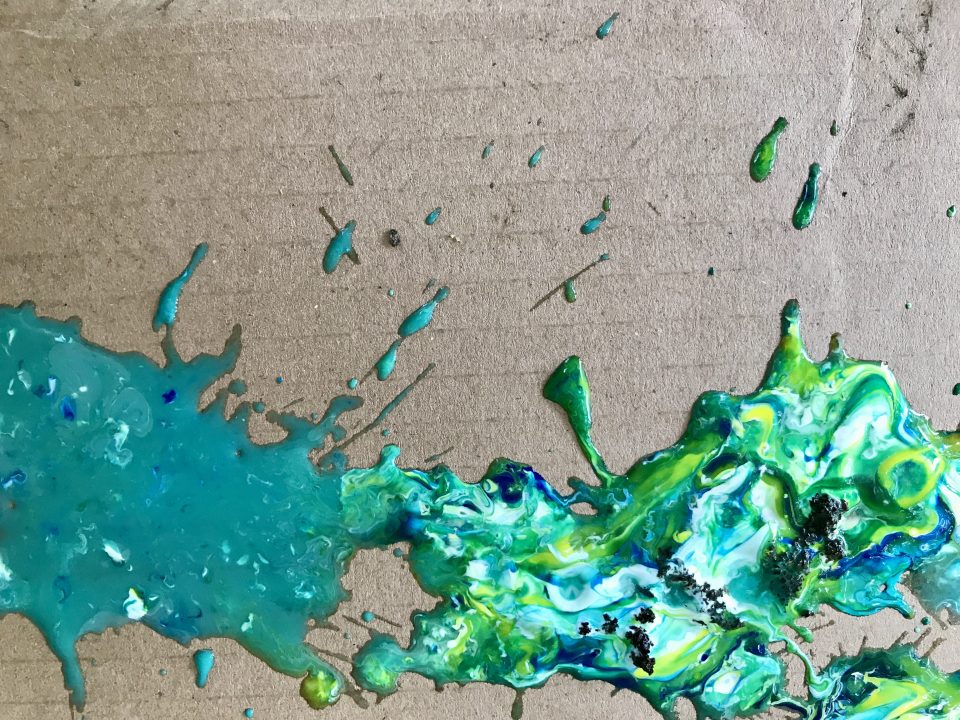
- Experiment with paint pouring! You can choose to apply the paint directly, or mix it with water before adding it to the canvas. What happens? Try one or both processes. Talk about how these choices affect your painting.
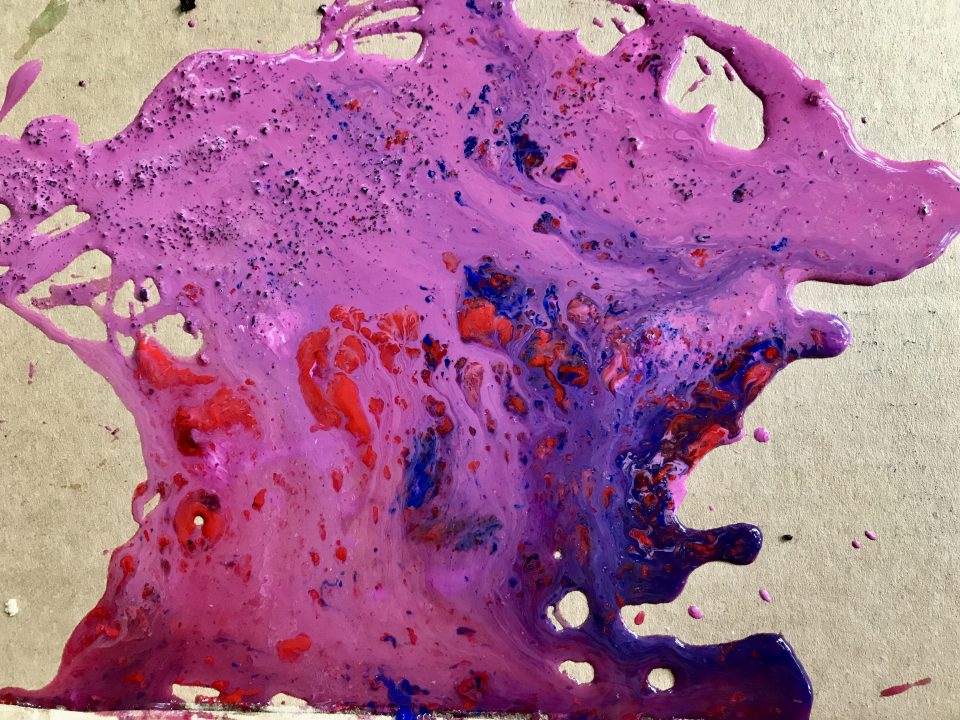
- Experiment with adding texture. Sprinkle sand, coffee grounds, or salt onto sections of your painting. Experiment with adding more or less. How does this change the way your artwork looks? Note: Some children will not like the way the textures feel. Provide a tool, such as a spoon or sifter, for scooping and sprinkling.
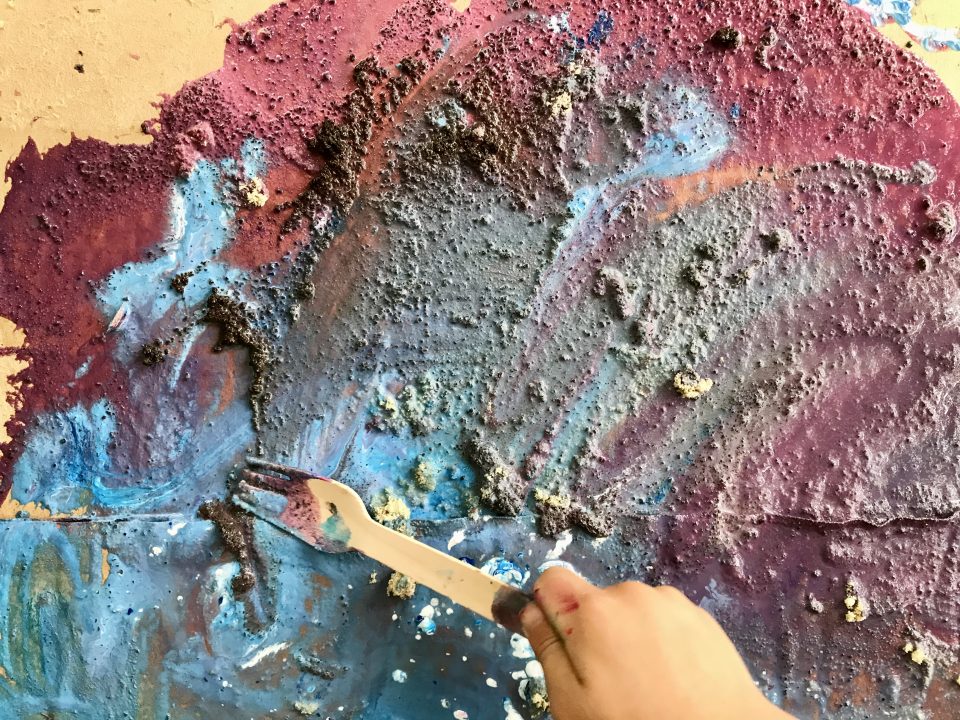
- Make marks in the texture. Look back at Frankenthaler’s work Painted on 21st Street. Notice areas where she made lines through thick sections of paint. Use your fingers or a tool to make marks through the surface of your paint. Explore the possibilities.
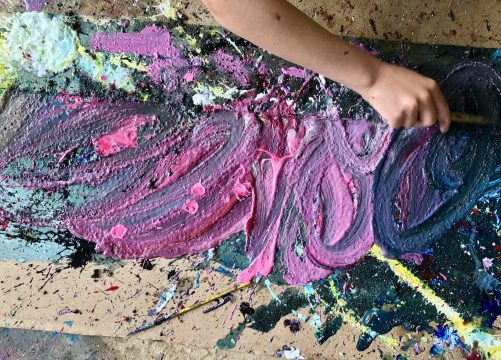
- Keep experimenting until finished. Continue pouring, layering, mixing, and marking until you’re satisfied with your work. It will likely be very wet and heavy when complete, so find a safe place for it to dry.